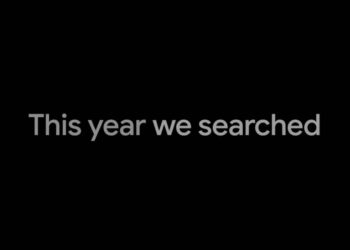Taxpayer access to US federally funded research results need not involve publishers giving away their product. An alternative mechanism is available, one that is already partially implemented. It is called the research report.
Demands for free access to taxpayer funded research results are in full cry. The focus is on journal publishers and their product. What is puzzling is that this access already exists in the US, in principle if not always in practice, and it does not involve the publishers. By law every federally funded research project is required to provide a detailed final report. Some science funding agencies make these reports freely available via the Web, but others do not. Making them all available would solve the access problem, without involving journal publishers.
It seems that nobody knows about these final reports. I do only because I found myself working with a leading publisher of them, the Department of Energy’s Office of Scientific and Technical Information (OSTI). DOE does about $5 billion a year in basic research, over 10% of the US federal basic research budget, and more physical science and computer science research than any other federal agency. Energy per se is not the topic; these are the descendents of the Manhattan project. Two things happened after the big war ended. First, the scientists who stayed became the DOE national labs –Los Alamos, Oak Ridge, etc. Second, the National Science Foundation (NSF) was created to fund those scientists who went back into the university system.
OSTI gets a copy of every DOE final report and publishes them online in a portal with the obscure name of Information Bridge. I think they publish about 10,000 reports a year, which makes them a major scientific publisher. Of course these reports are not journal articles, but in some ways they are actually superior. They are often much longer than the resulting journal article, if there even is one, with that much more information. They also often lead the resulting journal article by many months.
For example (and to toot my own horn), I have a research report in Information Bridge: “Report for the Office of Scientific and Technical Information: Population Modeling of the Emergence and Development of Scientific Fields.” It is dated October 2006. The resulting journal article: “Population modeling of the emergence and development of scientific fields” was published in Scientometrics in late 2008, or two years later. The research report contains what are to my mind the most interesting findings, which are not included in the journal article, as they are too speculative (but that is another story).
The point is that these research reports should satisfy the demand for public access to taxpayer funded research results, without messing with the journal publishers, or their business model. Unfortunately, some federal research agencies do not make their reports publicly available, the way OSTI does. The National Institutes of Health, which accounts for one half of the federal basic research budget, only makes journal abstracts and old journal articles available. NSF publishes nothing.
Given that there is only one federal government this agency to agency disparity is absurd. There is simply no federal policy on public access to research results, but there should be. Every agency should make its research reports publicly available.
In short, the issue of taxpayer access to research results is very different from the issue of open access to journal articles. The funding agencies can easily provide public access to their research reports, which they all receive, without bothering the researchers or the publishers.
Discussion
17 Thoughts on "Taxpayer OA is Already Here, In Principle — In Reports"
A good idea, but is the fact that these reports are definitely not peer-reviewed a potential problem? (not that peer review is perfect, but at least it’s a filter)
My view is that the peer review is in the funding. If the government paid for it, then the government should publish it. Peer reviewed journals are serving a different purpose, such as selecting and filtering. It is not clear that the taxpayers deserve free filtering, just free reports on what they paid for.
A cogent argument and one that has not been given much light. I don’t know the history of the policies of the granting agencies, but I wonder whether there was push-back from scientists on the grounds that releasing progress (or final) research reports would give competitors an advantage and perhaps allow for the grantee to be “scooped” to publication?
This issue, however, could be solved in the same way as the NIH Public Policy, which is to delay release of these reports until the journal articles(s) is published.
I have no idea why other agencies are not publishing their research reports, so I prefer not to guess. It may just be that OSTI went first. Also, collecting and publishing these things is neither easy nor cheap. On the other hand OSTI’s budget is a mere $9 million, while NIH’s NLM gets $350 million. It may just be that people are under the mistaken impression that journal articles are all there are, when it comes to important scientific communication. My view is that journal articles are really elaborate public notices. A 60 page report conveys a lot more information than a 6 page article.
I suppose one could embargo the research reports until a journal article was published, but that would be a very complex and burdensome system. But they are moving toward linking articles to federally funded projects, which might make it feasible.
Good point. I am not sure this content shows up in Google or GoogleScholar and until that happens the stuff is not ‘public’
FWIW, I was able to successfully locate all (out of between 14-20) documents via GoogleScholar at the osti.gov domain except for one: Fuels Preparation Department monthly report, October 1960. Interestingly, other monthly fuel preparation reports could be found.
Not necessarily a definitive answer to whether GoogleScholar can access everything, but I would say it is probably ‘public,’ if we are using GoogleScholar as the basis. Also, these were found using known-title / author searches, so public and accessible/discoverable could be debatable as well.
To search 45 U.S. government databases and 2000+ government websites within 14 federal agencies for reports, go to http://www.science.gov/
Indeed, and OSTI is the operating agent for Sci.gov so I have been involved with its development. Sci.gov is a marvel, especially its federation technology. It farms the search query out to each of the 45 agency document database’s local search engines, then combines and re-ranks the search results into a unified hit list. No mean feat that.
However, most of these databases do not include agency final reports, which is my point. They should. These reports are a huge untapped resource, that many agencies do not make publicly available.
Time for a story. Once upon a time, long ago, I was on the faculty of Carnegie Mellon. One of my best students went to work for the then US Bureau of Mines, in Pittsburgh, now part of the National Energy Technology Laboratory, a DOE lab. I went to see him in his new digs. He took me out back into a parking lot, to a small metal shed. It was lined with shelves and the shelves were full of 6 copies each of final reports. “Big John,” as we called him, said to me “here is our product.” The Web can, and should, change this story, but so far it has largely not.
There is one problem with this. A former administration decided that many of these technical reports (and the index to them) were so valuable that they decided the reports and the index should be SOLD rather than distributed to the taxpayers. The distribution system is called the National Technical Information Service (NTIS). They sell the reports for $27 (fiche) or $33 (print on demand). Yes, I am all in favor of open government. Lets start with NTIS.
Exactly Elsie, the basics of the system are clearly already in place. Why should taxpayers have to pay these dollars to read about the research they have already paid billions for? And why should publishers be forced to give away their products when these reports are already available?
By the same token the Defense Technical Information Center used to sell all its reports, but it now makes many available for free.
See http://www.dtic.mil/dtic/search/tr/tr.html
(But especially my little http://www.dtic.mil/docs/citations/ADA057227)
If you would like a good history of why federally supported scientific research is published in journals and not by the federal government, you might want to check out this article by John Walters. “The Republic of Federal Scientific Publication: The Not-So-Public Domain” Journal of Government Information 25.4 (1998).
Available at: http://works.bepress.com/john_walters/5
Thanks Tim, this is a fascinating read, and I am only part way through. Walters seems to think that journal publication of federally funded research results is almost illegal, an opinion I do not share. Mind you I know nothing about IP law. The question seems to be this: if I write an article describing my research, well after my research contract has expired, what claim does the government have to my words? I can’t imagine a hairier issue.
In any case my point is much simpler, merely that there is a mechanism for providing taxpayer access to taxpayer funded research results that does not involve the journals.
You appear not to be aware that the AAP has made this point repeatedly in debates over the NIH policy. See, for example, this statement at its website:
Are there alternatives to the NIH policy?
Yes. There are better models for providing for access to taxpayer-funded research without infringing upon copyright concerns. For example, in the 2007 America COMPETES Act, the NSF was directed to adopt a policy that provides public access to final reports, summaries and citations related to research projects the NSF funded. This process makes results of federally funded research publicly available without jeopardizing authors, publishers, scientists, and researchers interests the organized publishing process.
Publishers widely support the kind of public access that the NSF has adopted. It demonstrates an acceptable way for the federal government to promote the research it funds without undermining publishers or infringing upon the copyright protections that have sustained scientific communication for more than one hundred years.
Thanks Sandy, I was not aware of this, but then I am new to the industry side of scholarly publishing. Note that NSF has not adopted the Competes Act requirement regarding public access to scholarly reports. Thus I am puzzled by the statement that “Publishers widely support the kind of public access that the NSF has adopted.”



